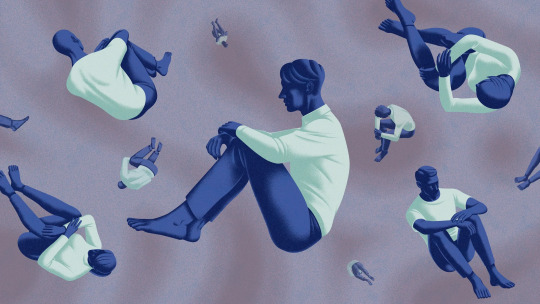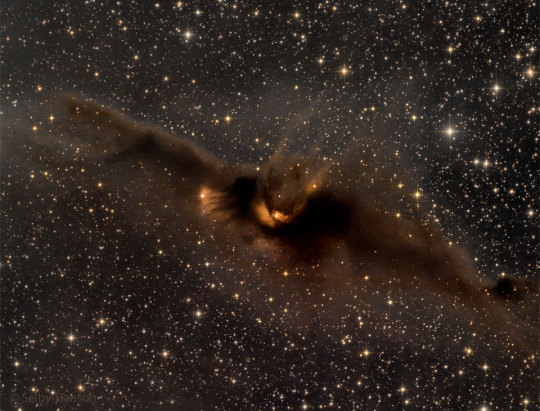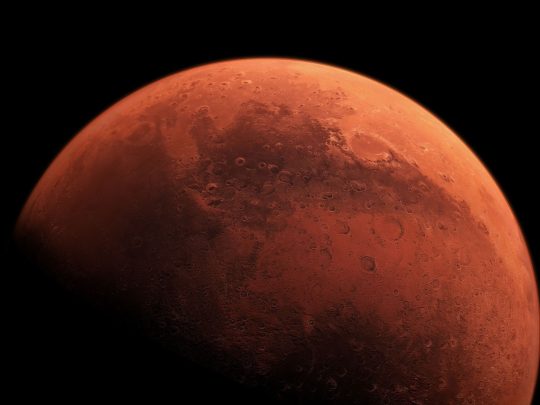Explorer of the intersection of psychology, humanities, and technology. Futurist, science enthusiast, tech geek, coffee drinker.
Don't wanna be here? Send us removal request.
Text
How Loneliness Reshapes the Brain

Loneliness doesn’t just make people feel isolated. It alters their brain in ways that can hinder their ability to trust and connect to others.
The Neumayer III polar station sits near the edge of Antarctica’s unforgiving Ekström Ice Shelf. During the winter, when temperatures can plunge below minus 50 degrees Celsius and the winds can climb to more than 100 kilometers per hour, no one can come or go from the station. Its isolation is essential to the meteorological, atmospheric and geophysical science experiments conducted there by the mere handful of scientists who staff the station during the winter months and endure its frigid loneliness.But a few years ago, the station also became the site for a study of loneliness itself. A team of scientists in Germany wanted to see whether the social isolation and environmental monotony marked the brains of people making long Antarctic stays. Eight expeditioners working at the Neumayer III station for 14 months agreed to have their brains scanned before and after their mission and to have their brain chemistry and cognitive performance monitored during their stay. (A ninth crew member also participated but could not have their brain scanned for medical reasons.)As the researchers described in 2019, in comparison to a control group, the socially isolated team lost volume in their prefrontal cortex — the region at the front of the brain, just behind the forehead, that is chiefly responsible for decision-making and problem-solving. They also had lower levels of brain-derived neurotrophic factor, a protein that nurtures the development and survival of nerve cells in the brain. The reduction persisted for at least a month and a half after the team’s return from Antarctica.
It’s uncertain how much of this was due purely to the social isolation of the experience. But the results are consistent with evidence from more recent studies that chronic loneliness significantly alters the brain in ways that only worsen the problem.
[Read more]
[Source: Quanta Magazine]
8 notes
·
View notes
Photo

All good things come in threes! The third proper launch attempt of the Artemis 1 mission to the Moon is scheduled for tomorrow, Nov 16, at 01:04 a.m. EST (06:04 a.m. UTC). We provide you with an updated travel plan to keep up with the crew’s location during their 25-day journey.
by @Kurz_Gesagt
87 notes
·
View notes
Photo

LDN 43: The Cosmic Bat Nebula via NASA https://ift.tt/xcm1rGo
248 notes
·
View notes
Video
youtube
Do Antidepressants Shrink Your Brain? No but Depression Does. I think it’s pretty common for people to believe this. But in actuality, the illness, major depression causes brain cell loss and antidepressants protect you from that brain cell loss. This is where we get the term "pseudodementia." Depression can have profound effects on your memory and it's a cumulative effect. The effect is greater with repeated episodes and episodes that go a long time without treatment or resolution.
0 notes
Video
youtube
Understanding Avoidant Personality Disorder
An essential feature of avoidant personality disorder is a pattern of being socially inhibited, feeling inadequate and hypersensitive to rejection or criticism starting by early adulthood.
This pattern occurs pervasively which means it spreads across all areas of your life. So it’s not something you only noticed after being a bad relationship with someone who sucked your soul and tore you down emotionally. After a relationship like that, you will have some battle wounds that can look like feeling inadequate.
Most of the personality disorders including this one really start to manifest around late adolescence and early adulthood. And with avoidant personality disorder, you can get hints of social awkwardness and insecurity that seem a excessive that the child doesn’t seem to grow out of.
Here’s the criteria. You need 4 or more of the 7.
1. Avoids occupational activities that involve significant interpersonal contact because of fears of criticism, disapproval, or rejection.
2. Is unwilling to get involved with people unless certain of being liked.
3. Shows restraint within intimate relationships because of the fear of being shamed or ridiculed.
4. Is preoccupied with being criticized or rejected in social situations.
5. Is inhibited in new interpersonal situations because of feelings of inadequacy.
6. Views self as socially inept, personally unappealing, or inferior to others.
7. Is unusually reluctant to take personal risks or to engage in any new activities because they may prove embarrassing.
There is a lot of overlap between social anxiety disorder and avoidant personality disorder. However, with social anxiety, the fear and anxiety is limited to social interactions. And you realize your fears are unreasonable at some level but you’re still anxious about it. And you can still have close personal relationships.
With avoidant personality, there’s a deep belief that there’s something wrong with you and because of that, you hyperfocus on subtle cues that people are rejecting or criticizing you. The threshold for seeing something as critical is very low. Meaning it doesn’t take much for you to feel insulted or hurt by someone’s remarks. Your reaction to this is to stay away and avoid dealing with people in any way you can.
The treatment for this is cognitive therapy. There may be some behavioral exercises that a therapist can help set up for you, but generally the approach is addressing your distorted beliefs about yourself.
8 notes
·
View notes
Text
How to Change the Created Date or Modify the Date on Mac
Creation Date / Modified Date If you are changing the creation date attribute will also change the modified date attribute
1. to open Terminal application (/Applications/Utilities/Terminal.app)
( cmd + space ) to open “Spotlight Search” Type in “Terminal” press enter
2. Explain what is for creation date and modified date
-t = for created date -mt = for modified date
Replace YYYYMMDDhhmm with the desired date information:
“touch -t YYYYMMDDhhmm “ “touch -mt YYYYMMDDhhmm ” ( copy without the question marks!! )
3. Type the following in the command line “Do not press enter/return” !
Exemple: 22nd May 1986 2:24 pm ( 14:24 ) or 22.05.1986 2:24 pm
-“touch -t 198605221424 “
-“touch -mt 198605221424 “
*UPDATE* If It's not working then try this out creation date: (angle bracke right) Setfile -d '08/31/2019 11:00:00' (angle bracke left)file.txt(angle bracke right)
SetFile -d 'MM/DD/YYYY' drag and drop file here (changing Creation date of file) touch -t is used to change the modification date now onwards ------------- Do not forget the space otherwise you get a message ( touch: out of range or illegal time specification: [[CC]YY]MMDDhhmm[.SS] )
4. Open Finder locate the file you wish to modify. Drag and drop the file into the Terminal window, the file and path will be added to the end of the line.
Here is an example of what the line should look like:
Option 1: Single file touch -t 198605221424 /Users/maikkleinert/Desktop/How\ to\ modify\ date\ or\ time/all\ in\ one\ pdf_by_MaikKleinert.com.pdf
Option 2: Multiple file touch -t 198605221424 /Users/maikkleinert/Desktop/How\ to\ modify\ date\ or\ time/Concert-Online-Course_by_MaikKleinert.com.jpg /Users/maikkleinert/Desktop/How\ to\ modify\ date\ or\ time/Film\ Photo\ Collective_by_MaikKleinert.com.png /Users/maikkleinert/Desktop/How\ to\ modify\ date\ or\ time/Instagram\ @MaikKleinert.png
Option 3: Folder ( Do not forget the /*) touch -t 198605221424 /Users/maikkleinert/Desktop/How\ to\ modify\ date\ or\ time\ FOLDER /*
Then press enter! Done
To check the date ( right click on file and “Get Info” ) or press ( cmd+I )
Also you can Add /* to the end of the command. If you’re only targeting a specific file type include its extension (e.g. /*.jpg). Example: touch -t 198605221424 /Users/maikkleinert/Desktop/How\ to\ modify\ date\ or\ time\ FOLDER/*.jpgor touch -t 198605221424 /Users/maikkleinert/Desktop/How\ to\ modify\ date\ or\ time\ FOLDER/*.pdf
0 notes
Text
How to Delete Files Using the Terminal in macOS
Delete files
rm File.doc
Pressing Return will immediately delete the file.
If you’re feeling cautious, you could run the above command with this flag as follows:
rm -i File.doc
Pressing Return won’t actually delete the file, because the -i flag acts as a pause button. In order to proceed, you need to type “yes” or “y”.
Delete folders
To delete a folder run this command:
rmdir Folder
You can’t use the -i flag with the rmdir command.
Note that this command only deletes empty folders. If you want to delete a folder that contains files and sub-folders use this command:
rm -R Folder
You can use the -i flag with the rm -R command:
rm -iR Floder
0 notes


